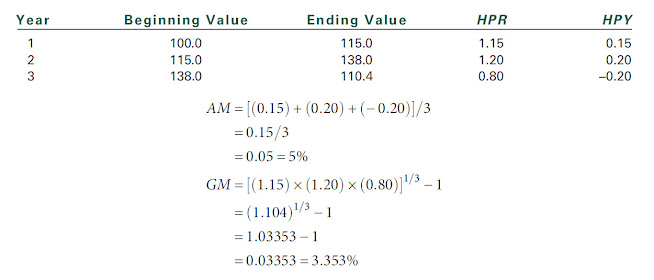Beta (β) is a Greek alphabet used in finance to denote the volatility or systematic risk of a security or portfolio compared to the market.
# HOW BETA WORKS
A beta coefficient shows the volatility of an individual stock compared to the systematic risk of the entire market. Beta represents the slope of the line through a regression of data points. In finance, each point represents an individual stock's returns against the market.
Beta effectively describes the activity of a security's returns as it responds to swings in the market. It is used in the capital asset pricing model (CAPM), which describes the relationship between systematic risk and expected return for assets. CAPM is used to price risky securities and to estimate the expected returns of assets, considering the risk of those assets and the cost of capital.
# HOW TO CALCULATE BETA?
A security's beta is calculated by dividing the product of the covariance of the security's returns and the market's returns by the variance of the market's returns over a specified period. The calculation helps investors understand whether a stock moves in the same direction as the rest of the market. It also provides insights into how volatile–or how risky–a stock is relative to the rest of the market.
# WHAT ARE THE BETA VALUES?
Beta Equal to 1; A stock with a beta of 1.0 means its price activity correlates with the market. Adding a stock to a portfolio with a beta of 1.0 doesn’t add any risk to the portfolio, but doesn’t increase the likelihood that the portfolio will provide an excess return.
Beta Less than 1; A beta value less than 1.0 means the security is less volatile than the market. Including this stock in a portfolio makes it less risky than the same portfolio without the stock. Utility stocks often have low betas because they move more slowly than market averages.
Beta Greater than 1; A beta greater than 1.0 indicates that the security's price is theoretically more volatile than the market. If a stock's beta is 1.2, it is assumed to be 20% more volatile than the market. Technology stocks tend to have higher betas than the market benchmark. Adding the stock to a portfolio will increase the portfolio’s risk, but may also increase its return.
Negative Beta; A beta of -1.0 means that the stock is inversely correlated to the market benchmark on a 1:1 basis. Put options and inverse ETFs are designed to have negative betas. There are also a few industry groups, like gold miners, where a negative beta is common.
Investors commonly evaluate two categories of risk. Systematic risk is the risk of the entire market declining, called un-diversifiable. Unsystematic, or diversifiable risk, is the uncertainty associated with an individual stock or industry. It is risk related to a company or sector and can be mitigated through diversification.
# IS BETA A GOOD MEASURE OF RISK?
Beta can provide some risk information, but it is not an effective measure of risk. Beta only looks at a stock's past performance relative to the S&P 500 and does not predict future moves. It also does not consider the fundamentals of a company or its earnings and growth potential.
# HOW DO INVESTORS INTERPRET A STOCK'S BETA?
A Beta of 1.0 for a stock means it has been as volatile as the broader market. If the index moves up or down 1%, so too would the stock, on average. Betas larger than 1.0 indicate greater volatility - so if the beta were 1.5 and the index moved up or down 1%, the stock would have moved 1.5%, on average. Betas less than 1.0 indicate less volatility: if the stock had a beta of 0.5, it would have risen or fallen just half a percent as the index moved 1%.
# IS BETA A HELPFUL MEASURE FOR LONG TERM
INVESTMENTS?
While beta can offer useful information when evaluating a stock, it does have some limitations. Beta can determine a security's short-term risk and analyze volatility. However, beta is calculated using historical data points and is less meaningful for investors looking to predict a stock's future movements for long-term investments. A stock's volatility can change significantly over time, depending on a company's growth stage and other factors.
.png)
.png)
.png)
.png)
.png)






















.png)
.png)

.png)
